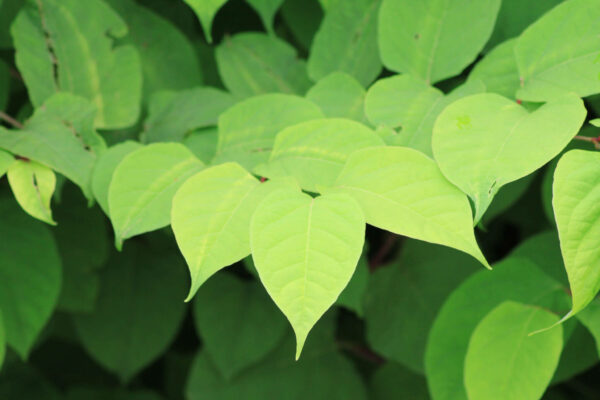New Japanese knotweed guidelines in revised version of the Seller’s Property Information Form (TA6)

An update from Andy Creer of Hardwicke regarding Japanese knotweed
On 7th February 2020 the Law Society issued a new version of the Seller’s Property Information Form (TA6). This 4th edition contains a revision to question 7.8, which deals with the disclosure of information in respect of Japanese knotweed.
The revised form and updated guidance is a very welcome improvement, and should reduce some of the uncertainty in potential misrepresentation claims over whether a property is ‘affected by knotweed’.
The changes can be summarised as follows:-
Old form TA6 (3rd edn)
Note: Japanese knotweed is an invasive non-native plant that can cause damage to property. It can take several years to eradicate.
New form TA6 (4th edn)
Note: Japanese knotweed is an invasive non-native plant that can cause damage to property if left untreated. The plant consists of visible above ground growth and an invisible rhizome (root) below ground in the soil. It can take several years to control and manage through a management and treatment plan and rhizomes may remain alive below the soil even after treatment.
The form still asks the same question: Is the property affected by knotweed? But now requires the seller to supply a copy of any insurance cover with the plan itself.
Notably, the content of the explanatory notes for Qu.7.8 has been updated to include:
“The seller should state whether the property is affected by Japanese knotweed. If you are unsure that Japanese knotweed exists above or below ground or whether it has previously been managed on the property, please indicate this as ‘Not known’.”
The note then emphasizes that to answer ‘No’ the seller must be certain that there is no rhizome present in the ground or within 3 metres of the property boundary. It then provides information about the effectiveness of different remediation methods and cautions the seller against assuming treatment will have eradicated the plant.
As an aside, one of my colleagues had this very conversation with his wife when selling their home. Consequently, he refused to put ‘No’ as he didn’t have sufficient knowledge of what might be in the soil from a predecessor’s period of ownership.
The status of the explanatory notes remains the same: “They are intended to be reference material and not for use on every transaction”.
Two Observations
- If properly informed, we can expect most sellers to now routinely state ‘Not known’ and transfer the risk to the buyer. The buyer will not necessarily be able to inspect neighbouring land and a surveyor carrying out a residential mortgage valuation will not be under a duty to do so if Davies v Connells Survey and Valuation Limited, Birmingham CJC, Dec 2018 (unreported) is correct.
- However, in my experience, these explanatory notes are not routinely sent by conveyancing solicitors to their seller clients with the blank forms. This helpful guidance may have the unintended consequence of catching some sellers out if they put ‘No’ without having seen it.
Andy Creer
Hardwicke
February 2020
Andy Creer and several of her colleagues, notably John Clargo and Andrew Skelly, have particular expertise in dealing with issues related to Japanese knotweed and have provided seminars on the topic. You can see copies of the past articles here.
The new forms can be found here.
Disclaimer
This content is provided free of charge for information purposes only. It does not constitute legal advice and should not be relied on as such. No responsibility for the accuracy and/or correctness of the information and commentary set out in the article, or for any consequences of relying on it, is assumed or accepted by any member of Chambers or by Chambers as a whole.
Contact
Please note that we do not give legal advice on individual cases which may relate to this content other than by way of formal instruction of a member of Gatehouse Chambers. However, if you have any other queries about this content please contact:

